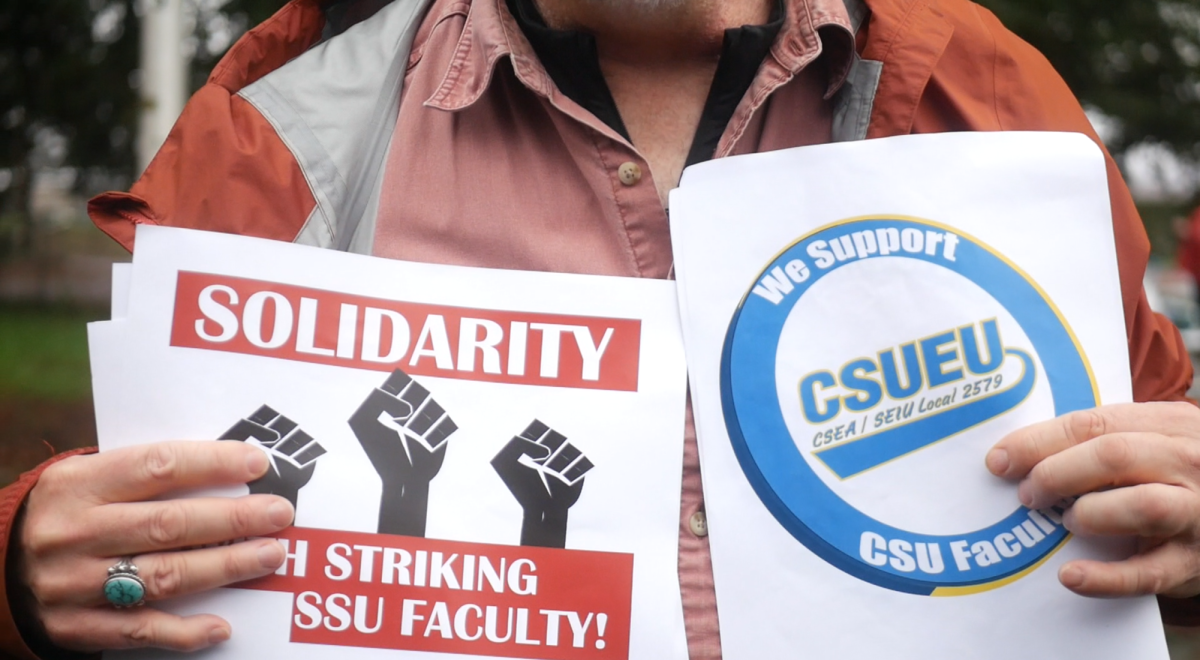On Thursday Jan. 25, student assistants across all 23 CSU campuses received an email for a Union authorization vote.
According to Csueu.org , the “Student Assistants from California State University (CSU) campuses are voting Jan. 25 – Feb. 22 to form their union with the California State University Employees Union (CSUEU/SEIU 2579)”.
This would be the largest undergraduate worker-student union in U.S. history.
“When thousands of us vote Union YES, our collective strength will position us to negotiate fair pay, sick time, affordable parking, and so much more,” the email read.
McLovin, a 2nd year cinematic arts and technology major, first heard about Unions by going to baseball games in Petco Park and later discovered CSUEU through social media on the union’s Instagram account. He is a student worker for the Office of the President and Seawolf living ambassador.
He voted for the student assistants to be unionized.
“I think it’s important for students to know about unions because student workers are like normal workers,” McLovin said.
Last year, CSU’s legal counsel tried to argue the opposite.
According to the Sacramento Bee in April 2023, “ ‘The Student Assistants’ primary role is that of a student and not a traditional employee,” wrote Timothy Yeung, legal counsel for the CSU, in a letter to the administrative judge overseeing the case.”
Student assistants would need a 50 percent vote in favor or more to have union benefits.
While some students are graduating soon, that isn’t stopping their support for the Union.
Brett Atchison, 4th year psychology major, works at the GMC as an usher and student assistant at the records office. He didn’t vote because he’s graduating soon but did hear about the Union from a suitemate.
“It’s 100 percent important to know about unions, especially since they’re all over the news with the various strikes and right here at SSU, with [California Faculty Association] in the news,” Atchison said.
“Unions in general are a great thing because when people have power, people abuse it. That’s what unions prevent,” said 2nd-year theater major Arjan Sidhu. Sidhu works as a peer mentor for the FAST program. “I first learned about them in high school, but I didn’t expect to see them in action so soon,” Sidhu said.
Steve Estes is a history professor and labor historian at SSU.
“We’ve been in a service/knowledge economy now for at least since the 1980s or 90s, so it takes a while for organized labor for labor to organize when there are big economic changes,” said Estes.
Estes said that the last time there was a big push for organized labor was in an industrial economy, and the early part of the 20th to the mid part of the 20th century.
“I think we’re seeing labor organizing catch up with the shifting economy,” Estes said.
According to a report by the Economic Policy Institute, “compensation of the top CEOs shot up 1,209.2% from 1978 to 2022 (adjusting for inflation).”
“I was kind of pessimistic at the very beginning of the semester on the students about the state of labor organizing, and the students were much more optimistic than I was, corrected me and said, No, no, this is an opportunity. And I think they were right and I was wrong,” Estes said.
“Maybe people who’ve been around the block like me, weren’t ready for this, and younger people were. I hope that students do organize their own for their own rights, along with this union movement, because I think that the students of today are the workers of tomorrow. If they start learning now, learning how to organize, you’re going to be really well prepared when you go into the workforce to defend your own rights and to gain more power for yourself,” said Estes.





































